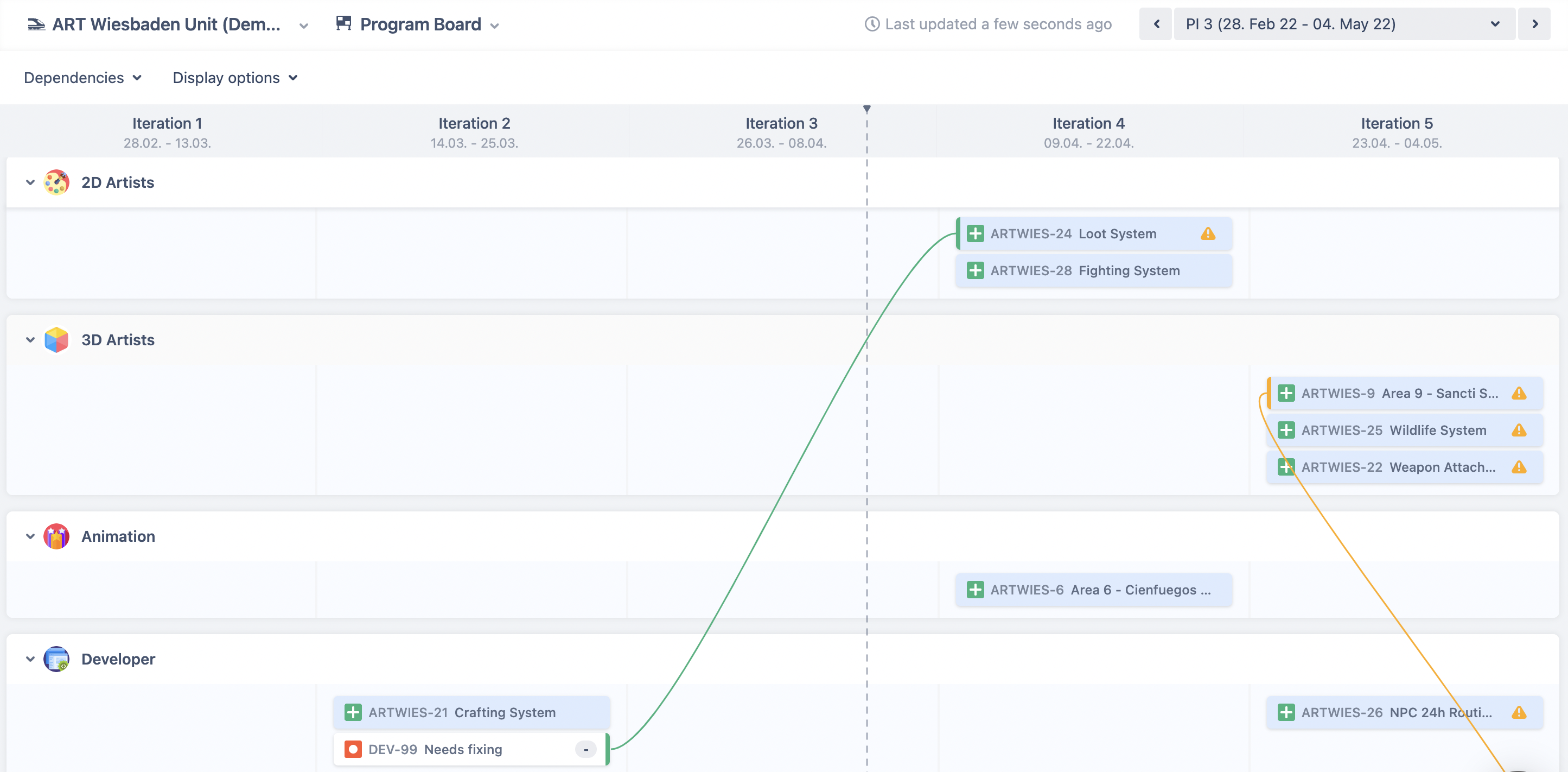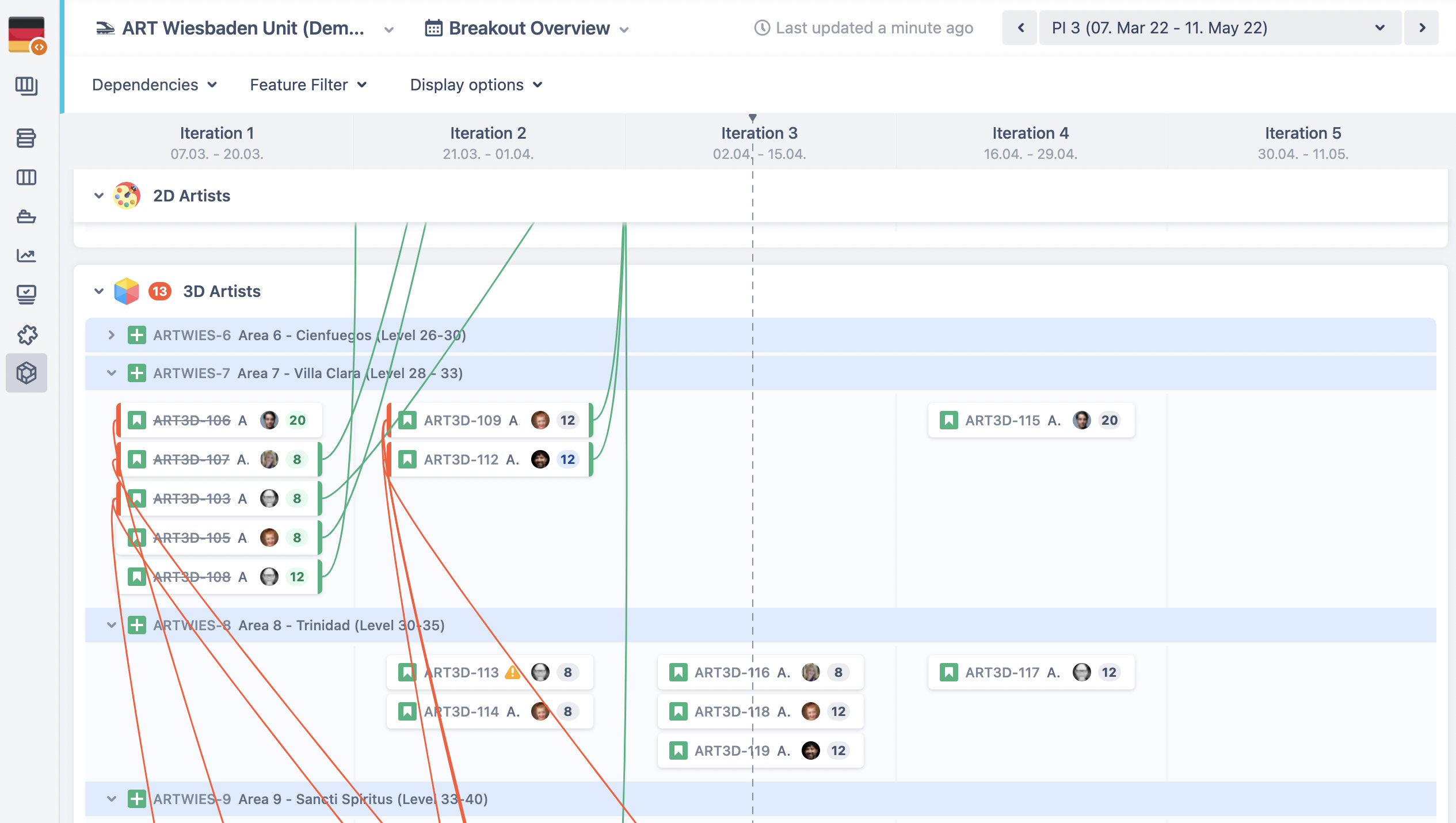Some of the most Agile football players are the smallest ones on the field. Take, for example, Saquan Barkley, running back for the New York Giants. He is about six feet tall and 230 pounds but his agility allows him to compete with the big guys. On the other side of the fence, we have a player like Trent Brown, an offensive lineman for the New England Patriots. He stands at six feet eight inches tall and a massive 380 pounds. These two men play the same sport at the same time on the same field. Agility comes in all shapes and sizes.
Agility in business is no different. Small startups and enterprises both need to harness agility in order to work in the most efficient way possible. The agile revolution is still thriving throughout the world and large organizations are starting to pick up on the advantages their startup competitors have. So how do enterprises scale the agile practices that seem to come so easily to startups and other lean organizations? Part of the answer is a framework and part of the answer is tooling.
SAFe®
SAFe® is the leading framework for agile at scale. SAFe® combines its ten principles along with a shift in organizational mindset and culture, to achieve business agility at an enterprise scale. The founders of SAFe® created the framework so that enterprises could harness the agility that startups have. The framework promotes alignment, collaboration, and productivity across a large number of agile teams. It focuses on workflow patterns, values, planning and managing work, and roles and responsibilities within each team.
Agile Hive
Agile Hive is the fully integrated solution for SAFe® within Jira. If you and your team are using Jira and want to implement SAFe®, Agile Hive is the right tool for you. Agile Hive comes with reports, project templates, automated program boards, and enhanced roadmap planning to ensure that you and your team avoid the common time wasters that come with agile at scale.
Time wasters at work
Please note that this is not an exhaustive list, there are many more time wasters in Agile. This is just the list we decided to focus on for this post.
Prioritization takes too much time
Roy Disney of Walt Disney Co once said. “If your values are clear to you, your decision-making becomes easier.”
Teams spend a lot of time prioritizing their work items or deciding what to do first. This time can show up in meetings, discussions, chat messages, emails, and almost everywhere else in the work environment. This might mean that your prioritization values are not clear. If you find yourself endlessly circling back on discussions and waiting for decisions, it might be that you and your team waste a lot of time on prioritization. SAFe®. cleans that up with WSJF and Agile Hive helps to implement it.
WSJF stands for Weighted Shortest Job First and it can help save you a ton of time in your agile workflow. WSJF is calculated by dividing Cost of Delay (CoD) by the Duration. The Cost of Delay is the amount of value that is lost if the team doesn’t implement the new feature. You can calculate it by the following equation:
The duration is the amount of time it would take to implement the feature. Agile Hive implements this automated prioritization model by creating custom fields that will then calculate the WSJF for you and prioritize your new features automatically, reducing the time wasted in discussions and emails.
If you want to read more about WSJF, please head over to The SAFe® Solution to Prioritization - WSJF Meets Jira.
The work will always use the estimated amount
There are a couple of theories that work together here. The first is the Student Syndrome. In this theory, the thought is that if you give a deadline for work, it will get done close to that deadline. If it’s Monday, the deadline for the piece of work is Friday, and the job only takes one day, the work will likely start on Wednesday or Thursday. The second theory is Parkinson’s law. Here, the worker will spread the amount of work over the course of time before the deadline. Using our previous example, the worker would complete only ⅕ of the task every day until the deadline on Friday.
These are common pitfalls of estimation across organizations of all sizes. A smaller team might be able to get around this by working more cohesively but in a larger organization customers will feel the impact of Student Syndrome and Parkinson’s Law.
In any situation, transparency is the remedy. Agile Hive helps to implement transparency across your organization by implementing the WSJF fields and ART items backlog. With these two tools in hand, teams can continuously improve their speed to delivery and estimations.
On top of the transparency, a shift in management culture must take place. Management should look to reward teams who can deliver work items faster than expected and are willing to pick up extra work in their spare time.
Multitasking
One of the most common time wasters across organizations is multitasking. This time-waster involves working on multiple tasks simultaneously. Workers often think they are being more efficient when they are multitasking, when in fact they are not. Project managers often demand results across multiple projects which motivates workers to jump back and forth between tasks across projects. This movement between tasks causes confusion, time-wasting switching context, and puts all the projects that the employee is working on at risk.
The SAFe® and Agile Hive remedy for this is fairly simple; a work in progress (WIP) limit. The WIP limit allows workers to focus on the task at hand, instead of jumping back and forth between tasks. This, in turn, allows them to complete tasks faster and get feedback from their customers earlier. SAFe® helps as the methodology and Agile Hive makes it possible in Jira.
Dependencies
Have you ever started on a piece of work only to find out later that you need someone else to complete another task before you can start? What a waste of time! All of that time you spent working on something when you were supposed to be waiting, could have been spent doing another task, going to lunch, checking your emails, or playing ping pong with your colleagues.
For chronic time-wasting, dependencies often accrue the most time wasted. This is because there is no way to know if there are any dependencies on your task in the first place.
In Jira, we can use the linked issues field in any issue to show that a task is waiting on another task. This field is fairly easy to overlook, though, since it is small and often blends in with the overall UI of Jira.
With Agile Hive, you can visualize dependencies between multiple teams on your program board and within teams in your breakout board. Take a look at the program board below.
Every member of the Agile Release Train (ART) will be able to see the dependencies. This way, the team working on the ARTWIES-24 feature knows that someone needs to complete DEV-99 before they can get started on ARTWIES-24. On the team level, Agile Hive visualizes these dependencies by issues:
Instead of wasting time getting started on a feature or task that you cannot start on, check on the program board to see if there are any dependencies related to that feature or task. If there are none, get started on your work.
Time is money
It’s an old saying but when you waste time it rings true. It might not be money, but your time is valuable. Any wasted time is an opportunity cost of something else you could have done. Employees’ and workers’ time is valuable and should be treated by management as such. If the teams do not know what to work on and when to work on it, they will waste your time and the company’s resources.
If you would like a demo of how Agile Hive and Jira will help your organization avoid these common time wasters, please book some time with us here. You can also try the tool yourself or install the app on your instance now.
Further Reading
- Is SAFe® Something I Should Consider for my Organization?
- The SAFe® Solution for Prioritization – WSJF Meets Jira
- SAFe® – Can You Scale Agile Without Chaos?
- SAFe® – Creating a culture for continuous improvement
- SAFe vs. Spotify
- Scaling Agile and SAFe in organizations – An interview with Burkhard Schmidt
- The complete SAFe Implementation Roadmap series






